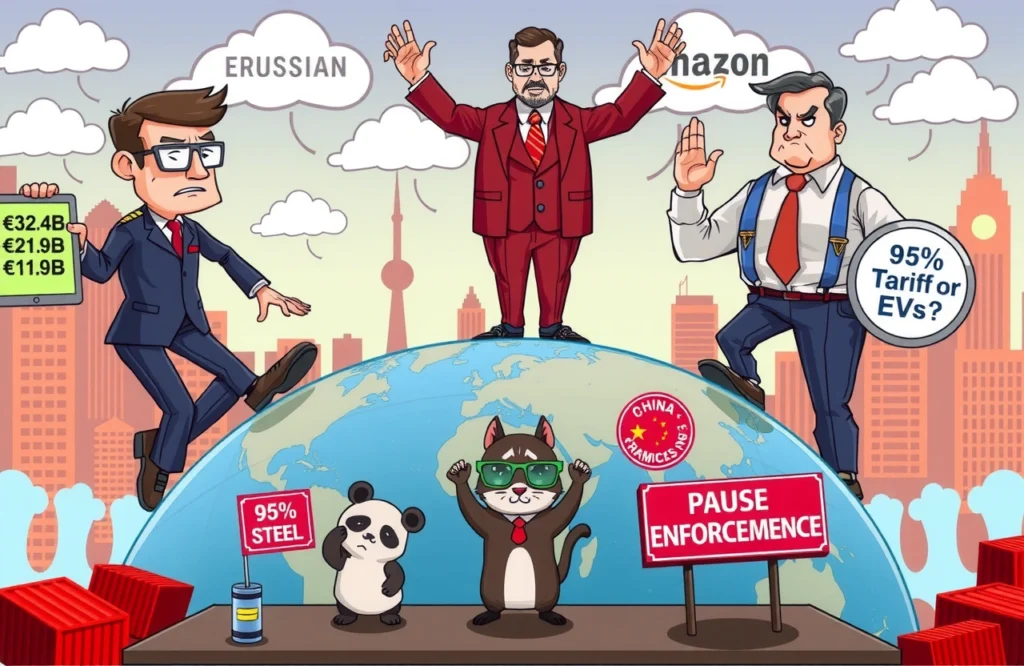Summary
- Ruthenium prices have nearly doubled over the past year to $800/oz, matching 2021 peaks and outperforming precious metals
- The AI-driven explosion in data storage demand makes ruthenium crucial for high-capacity hard disk drives
- Extremely scarce supply (just 30 tons annually) is deteriorating further due to mining underinvestment
- Traders report intense competition for existing stocks with major buyers facing procurement challenges
- Market analysts forecast supply deficits by 2025 as cloud storage grows 16% this year
An Obscure Metal’s Remarkable Ascent
In the shadow of gold and silver’s media spotlight, ruthenium—an ultra-rare platinum-group metal unknown to most investors—is staging a historic rally. As Johnson Matthey Plc data reveals, ruthenium prices reached $800 per ounce recently, nearly doubling from last year and approaching the all-time high of $870 set 18 years ago. This surge far exceeds gains in traditional precious metals, positioning ruthenium as 2024’s standout commodity performer. The catalyst? Artificial intelligence’s explosive growth is creating unprecedented demand for specialized materials powering data infrastructure.
The Crucial Role in AI Infrastructure
Ruthenium possesses extraordinary characteristics—exceptional hardness, corrosion resistance, and unique magnetic properties—making it indispensable across electronics, energy storage, and chemical manufacturing. Its most critical emerging application lies in hard disk drives (HDDs), where nanometer-thin ruthenium layers enable unprecedented data density. This capability positions ruthenium at the forefront of the AI revolution.
How Ruthenium Powers Data Storage
Manufacturers apply ruthenium coatings thinner than 1 nanometer to HDD platters, creating magnetic separation layers that prevent data interference between adjacent bits. This breakthrough enables manufacturers to pack 30% more data in each disk compared to previous technologies. As Sandeep Kaler, analyst at key minerals consultancy SFA (Oxford) Ltd., explains: “AI’s voracious data appetite demands cheap, high-capacity storage solutions. Ruthenium delivers those efficiency gains without expensive equipment overhauls—it’s the unsung hero of enterprise AI infrastructure.”
Cloud Storage Expansion Accelerates Demand
International Data Corporation (IDC) projects 16% year-over-year growth in HDD shipments during 2024, primarily driven by cloud service providers scaling AI capabilities. Major hyperscalers like Amazon Web Services, Microsoft Azure, and Google Cloud Platform dominate demand as they deploy increasingly sophisticated large language models requiring colossal datasets. When considering enterprise AI adoption across financial services, healthcare, and manufacturing sectors, McKinsey forecasts generative AI could add up to $4.4 trillion annually to the global economy—with ruthenium-enabled storage playing an indispensable role.
Perfect Storm of Supply Constraints
Unlike gold or silver, ruthenium faces uniquely constrained supply dynamics. Annual production averages 30 metric tons globally—equivalent to half a shipping container—making it one of Earth’s scarcest commercially traded elements. Rather than mined independently, ruthenium emerges exclusively as a byproduct from platinum and nickel operations concentrated in:
- South Africa’s Bushveld Complex (80% of supply)
- Russia’s Ural Mountains
- Zimbabwe’s Great Dyke region
Finite Reserves Meet Production Challenges
Major mining companies Anglo American Platinum and Sibanye-Stillwater report ruthenium recovery ratios of less than 2 grams per ton of platinum ore processed. Consequently, any disruption in primary platinum mining cascades into ruthenium shortages. Industry experts note three compounding pressures:
- Decades of underinvestment in platinum exploration depleted accessible reserves
- South African energy crises cause frequent smelter shutdowns
- Geopolitical sanctions complicate Russian inventories reaching Western markets
The Investment Drought Effect
Kalmer observes: “Years of low ruthenium prices discouraged producer investment in purification capacity after the 2020 platinum market downturn. Current facilities simply cannot absorb additional demand spikes.” Industry analysts predict 2024 ruthenium output will drop below last year’s level just as cloud storage needs accelerate. With no viable mass-scale substitutes and prices still below historic highs, manufacturers remain vulnerable.
Trading Turmoil and Financial Implications
Ruthenium’s specialized applications ensure it never trades on commodity exchanges. Transactions occur privately among miners, refiners, and industrial users. Sources within Johnson Matthey’s trading division report “intense bidding wars” breaking out among tech component suppliers securing dwindling stocks. A London-based trader disclosed: “Processors now pay premiums exceeding 25% above spot rates for guaranteed quarterly allocations—even premier buyers struggle to procure consistent volumes.”
Price Trajectory Analysis
Historical patterns suggest ruthenium’s rally has significant room to run. The metal demonstrated remarkable volatility during previous tech surges:
- 2006 peak: $870/oz during PC adoption boom
- 2011 plateau: $500/oz after manufacturers optimized coatings
- 2021 recovery: $800/oz prior to current AI wave
SFA analysts project ruthenium averaging $900/oz through late 2025 based on demand growth outpacing mines’ capacity expansions. Current spot prices remain considerably below platinum ($970/oz), palladium ($900/oz), or rhodium ($4,500/oz), raising prospects for substitution pressure reversal.
The Nightmare Scenario: Looming Deficits
Current ruthenium consumption exceeds mine output even before AI storage demands fully manifest. Kalmer’s modeling indicates market shortages could emerge within 18 months based on:
- Annual supply contraction: -8% projected over 2024-2025
- Cloud storage demands adding 20+ tons consumption annually
- Emerging applications in hydrogen catalysts and chip manufacturing
Substitution Theory Limitations
Component engineers scramble to develop coating alternatives like cobalt alloys or synthetic diamonds, but performance compromises remain substantial. Peer-reviewed studies confirm ruthenium-enhanced HDDs outperform alternatives in both reliability under continuous AI workloads and durability against mechanical stress. Dr. Evelyn Tan, materials scientist at Tsinghua University, noted: “Current nanomaterials cannot match ruthenium’s coercivity thresholds—replacement technologies remain theoretical.”
Strategic Implications Beyond Commodity Investors
Even microscopic ruthenium quantities profoundly impact multiple trillion-dollar industries:
- Data Centers: Ruthenium shortages could elevate HDD prices 10-12%, hindering AI adoption
- Electronic Manufacturers: Mid-tier hardware brands face allocation disadvantages versus giants
- Green Technologies: Ruthenium catalysts enable cost-efficient hydrogen purification
The U.S. Geological Survey omitted ruthenium from critical minerals lists despite having zero domestic production—a strategic oversight reflecting misunderstanding of modern material dependencies.
The Geopolitical Tinderbox
Concentrated African deposits and Russian refining dominance create potential chokepoints. Mineral security experts warn: “China’s strategic agreements with Zimbabwe give Beijing disproportionate market leverage during shortages.” As Washington implements semiconductor restrictions against China, reciprocal ruthenium export controls remain conceivable.
Navigating Investment Pathways
Despite market opacity, investors can gain ruthenium exposure through:
- Platinum ETFs: Focus on funds containing major miners like Sibanye-Stillwater
- Specialty Chemicals: Companies integrating ruthenium catalysis
- Storage Technology Leaders: Micron Technology and Seagate Technology
Caveats and Considerations
Ruthenium markets reward patience amid volatility. Investors should monitor:
- Cloud provider earnings calls for storage capex indications
- Platinum group metals quarterly production reports
- Electroplating innovation announcements
Deep tech transformations hinge on obscure materials like ruthenium. Ignoring this metal’s skyrocketing strategic importance risks overlooking vital supply chain vulnerabilities and opportunities amidst AI’s explosive growth period. Corporations dependent on mass data storage must audit ruthenium sourcing strategies now—procurement bottlenecks won’t resolve spontaneously before material deficits bite deeply into operational capabilities. Isn’t it time to assess how micro-materials influence macro-outcomes?




